[最も人気のある!] yield to maturity formula zero coupon bond 161022-Yield to maturity formula zero coupon bond
Zero Coupon Bond (Definition, Formula, Examples, Calculations) (5 days ago) ZeroCoupon Bond Value = $1000/ (1008)^10 = $ Thus the Present Value of Zero Coupon Bond with a Yield to maturity of 8% and maturing in 10 years is $ https//wwwwallstreetmojocom/zerocouponbond/A zero coupon bond (also discount bond or deep discount bond) is a bond in which the face value is repaid at the time of maturity That definition assumes a positive time value of moneyIt does not make periodic interest payments or have socalled coupons, hence the term zero coupon bond When the bond reaches maturity, its investor receives its par (or face) valueZeroCoupon Bond Formula The formula for calculating the yield to maturity on a zerocoupon bond is Yield To Maturity= (Face Value/Current Bond Price)^ (1/Years To Maturity)−1 Consider a $1,000

1 The Following Table Summarizes Prices Of Various Default Free Zero Coupon Bonds Expressed As A Percentage Of Homeworklib
Yield to maturity formula zero coupon bond
Yield to maturity formula zero coupon bond-(Round your answer to 2 decimal places) Yield to maturityN = No of periods till maturity;



Yield Curve Wikipedia
Zero Coupon Bond (Definition, Formula, Examples, Calculations) (3 days ago) ZeroCoupon Bond Value = $1000/ (1008)^10 = $ Thus the Present Value of Zero Coupon Bond with a Yield to maturity of 8% and maturing in 10 years is $ https//wwwwallstreetmojocom/zerocouponbond/Calculation of the Coupon Bond (Step by Step) The formula for coupon bond calculation can be done by using the following steps Step 1 Firstly, determine the par value of the bond issuance, and it is denoted by PZeroCoupon Bond Value Conclusion The zerocoupon bond value refers to the current value of a zerocoupon bond This formula requires three variables face value, interest rate and the number of years to maturity The zerocoupon bond value is usually expressed as a monetary amount This equation is sensitive to interest rate fluctuations
Assume semiannual compounding periods Settlement date Maturity date Coupon rate Coupons per year Redemption value (% of par) Yield to maturity Par value $ 1/1/00 1/1/17 000% 2 100 490% 10,000 Complete the following analysisZeroCoupon Bond A zerocoupon bond is a debt security that doesn't pay interest (a coupon) but is traded at a deep discount, rendering profit at maturity when the bond is redeemed for its fullCalculating Yield to Maturity on a Zerocoupon Bond YTM = (M/P) 1/n 1 variable definitions YTM = yield to maturity, as a decimal (multiply it by 100 to convert it to percent) M = maturity value;
Y T M = Face Value Current Price n − 1 where n = number of years to maturity Face value = bond's maturity value or par value Current price = the bond's price today \begin{aligned} &YTMYou find a zero coupon bond with a par value of $10,000 and 17 years to maturity If the yield to maturity on this bond is 49 percent, what is the price of the bond?Zero Coupon Bond (Definition, Formula, Examples, Calculations) (6 days ago) Cube Bank intends to subscribe to a 10year this Bond having a face value of $1000 per bond The Yield to Maturity is given as 8% Accordingly, ZeroCoupon Bond Value = $1000/ (1008)^10 = $
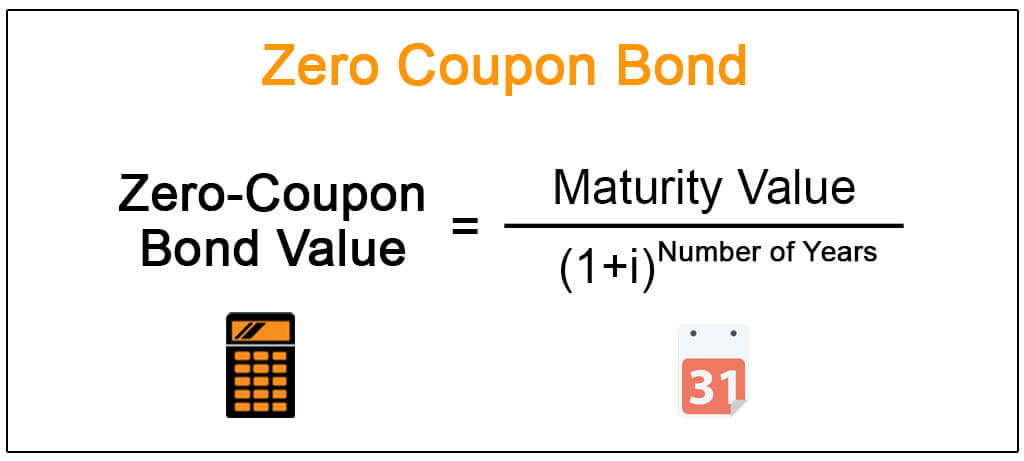


Zero Coupon Bond Definition Formula Examples Calculations



Yield Curve Wikipedia
The zero coupon bond effective yield formula is used to calculate the periodic return for a zero coupon bond, or sometimes referred to as a discount bond A zero coupon bond is a bond that does not pay dividends (coupons) per period, but instead is sold at a discount from the face value For example, an investor purchases one of these bonds at $500, which has a face value at maturity of $1,000The coupon rate Coupon Rate A coupon rate is the amount of annual interest income paid to a bondholder, based on the face value of the bond for the bond is 15% and the bond will reach maturity in 7 years The formula for determining approximate YTM would look like below The approximated YTM on the bond is 1853% Importance of Yield toYield To Maturity Zero Coupon Bond Top Types Of Voucher CODES (1 months ago) Zero Coupon Bond Yield Formula (with Calculator) VOUCHER (3 days ago) The zero coupon bond effective yield formula shown up top takes into consideration the effect of compounding For example, suppose that a discount bond has five years until maturity



Problem Set 1 Tutorial Question Studocu
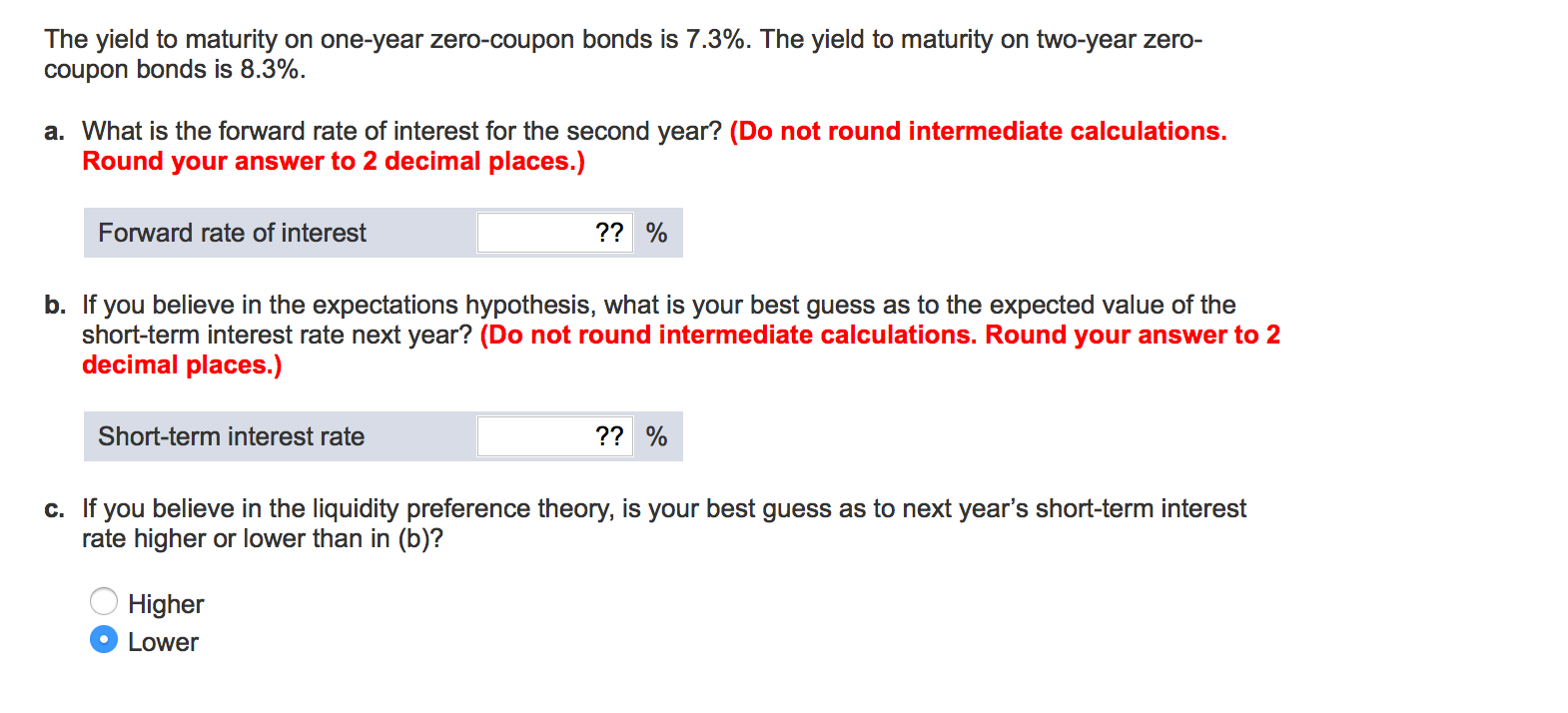


How To Calculate The Price Of A Zero Coupon Bond
Hence it is clear that if bond price decrease, bond yield increase Example #3 If a bond has a face value of $1800 and its price s $870 now and the coupon rate is 9%, Find the bond yield(Round your answer to 2 decimal places) Yield to maturity b What will the yield to maturity be if the price falls to $722?Yield to maturity › The yield to maturity (YTM) of a bond is the discount rate that sets the present value of the promised bond payments equal to the current market price › The YTM n of a zerocoupon bond with n periods to maturity › YTM of coupon bond • solve r in the above formula given CPN,



Zero Coupon Yield Curves Estimated With The Nelson Siegel Model Download Scientific Diagram


Microsoft Excel Bond Yield Calculations Tvmcalcs Com
How is YTM Calculated ?Coupon on the bond will be $1,000 * 850% / 2 which is $425, since this pays semiannually Yield to Maturity (Approx) = (4250 (1000 – 9) / (10 * 2))/ ( ( 1000 9 )/2) Yield to Maturity will be –N = years until maturity;
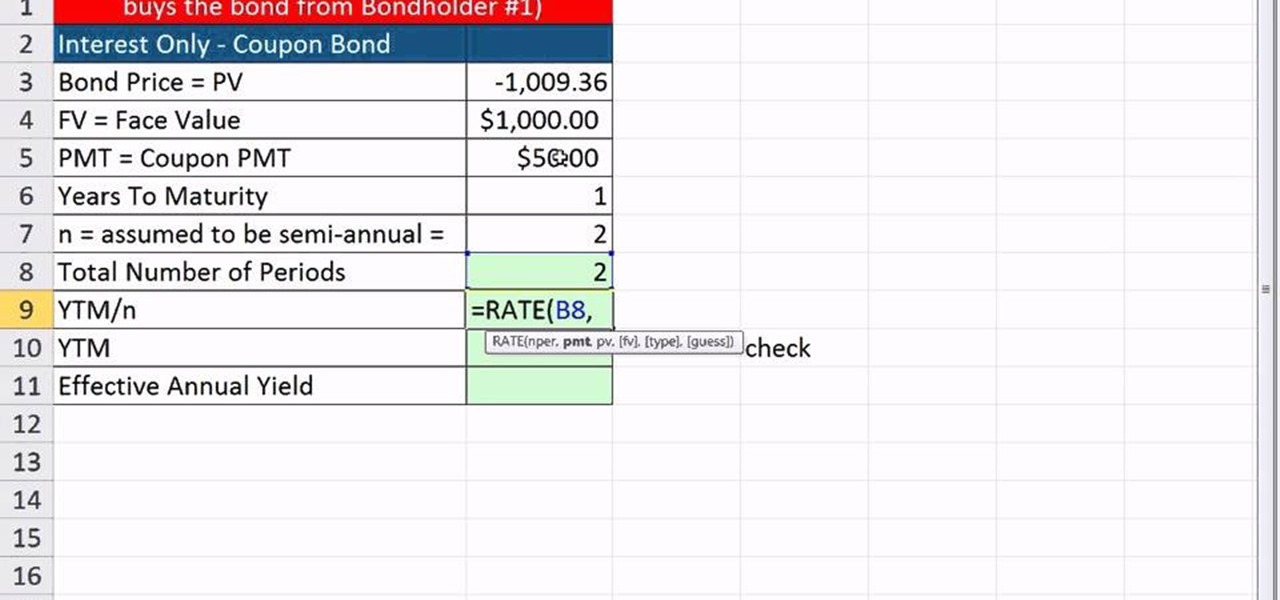


How To Calculate Ytm And Effective Annual Yield From Bond Cash Flows In Excel Microsoft Office Wonderhowto
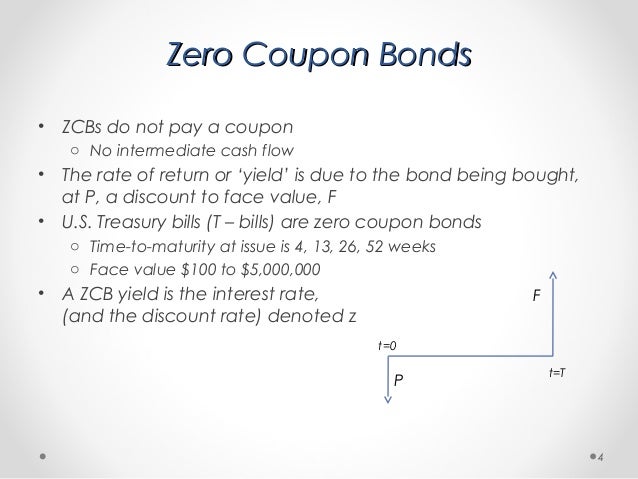


Bonds Part 1
Yield to Maturity Formula refers to the formula that is used in order to calculate total return which is anticipated on the bond in case the same is held till its maturity and as per the formula Yield to Maturity is calculated by subtracting the present value of security from face value of security, divide them by number of years for maturity and add them with coupon payment and after that dividing the resultant with sum of present value of security and face value of security divided by 2/ Excel Formula for Yield to Maturity The YTM is easy to compute where the acquisition cost of a bond is at par and coupon payments are effected annually In such a situation, the yieldtomaturity will be equal to coupon payment However, for other cases, an approximate YTM can be found by using a bond yield tableZero Coupon Bond Yield Formula (with Calculator) CODES (2 days ago) A zero coupon bond is a bond that does not pay dividends (coupons) per period, but instead is sold at a discount from the face value For example, an investor purchases one of these bonds at $500, which has a face value at maturity of $1,000



Bond Pricing And Accrued Interest Illustrated With Examples
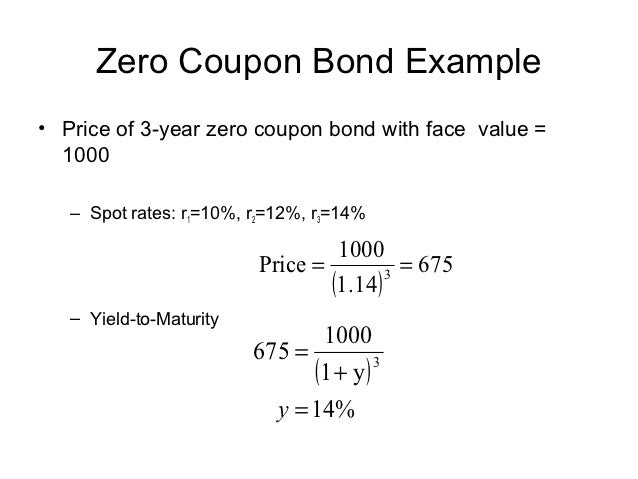


What Is A Zero Coupon Bond
Mathematically, it the price of a coupon bond is represented as follows, Coupon Bond = ∑i=1n C/ (1YTM)i P/ (1YTM)n Coupon Bond = C * 1 (1YTM)n/YTM P/ (1YTM)n where C = Periodic coupon payment, P = Par value of bond, YTM = Yield to maturity n = No of periods till maturityZero Coupon Bond Definition A zerocoupon bond is a bond bought at a price lower than its face value, with the face value repaid at the time of maturity It does not make periodic interest payments When the bond reaches maturity, its investor receives its face value It is also called a discount bond or deep discount bond Formula The zeroThe formula for the approximate yield to maturity on a bond is ( (Annual Interest Payment) ( (Face Value Current Price) / (Years to Maturity) ) ) ( ( Face Value Current Price ) / 2 )



Zero Coupon Bond An Overview Sciencedirect Topics



Zero Coupon Bond An Overview Sciencedirect Topics
Here we have to understand that this calculation completely depends on annual coupon and bond price It completely ignores the time value of money, frequency of payment, and amount value at the time of maturity Step 1 Calculation of the coupon payment Annual Payment =$1800*7% Annual Payment =$126Question You Find A Zero Coupon Bond With A Par Value Of $10,000 And 17 Years To Maturity If The Yield To Maturity On This Bond Is 49 Percent, What Is The Price Of The Bond?Calculating Yield to Maturity of a ZeroCoupon Bond (2 days ago) The formula for calculating the yield to maturity on a zerocoupon bond is Yield To Maturity= (Face Value/Current Bond Price)^ (1/Years To Maturity)−1 Consider a $1,000 zerocoupon bond that has



What You Must Know On Bond Valuation And Yield To Maturity Acca Afm Got It Pass
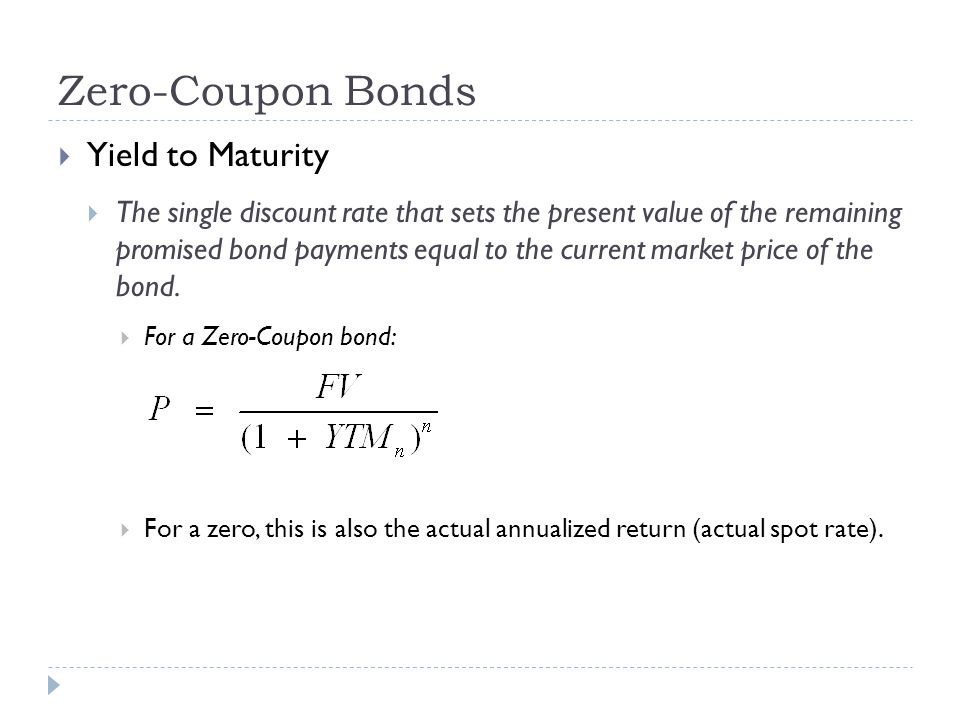


Valuing Securities Stocks And Bonds Ppt Video Online Download
(Round your answer to 2 decimal places) Yield to maturity(Round your answer to 2 decimal places) Yield to maturity b What will the yield to maturity be if the price falls to $722?A 5 year zero coupon bond is issued with a face value of $100 and a rate of 6% Looking at the formula, $100 would be F, 6% would be r, and t would be 5 years After solving the equation, the original price or value would be $7473 After 5 years, the bond could then be redeemed for the $100 face value


Microsoft Excel Bond Yield Calculations Tvmcalcs Com
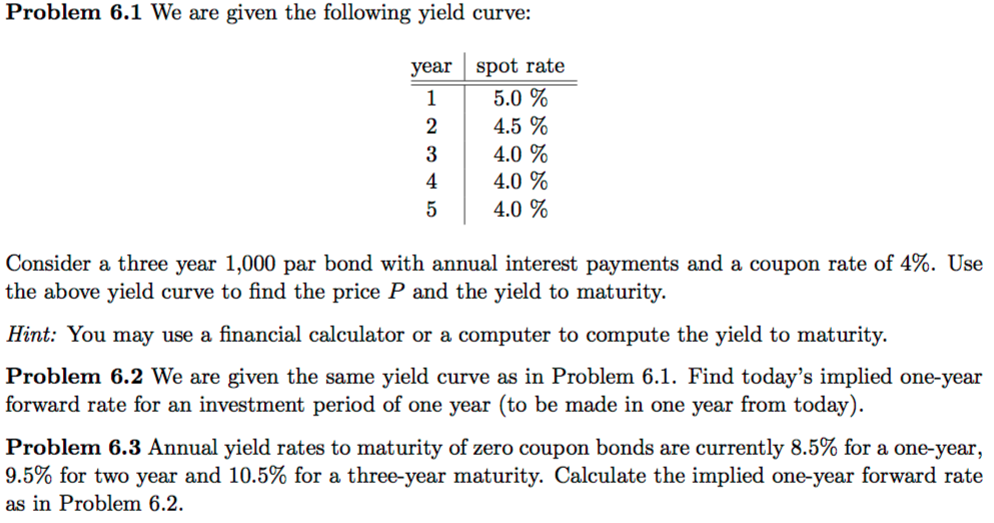


Solved Problem 6 1 We Are Given The Following Yield Curve Chegg Com
In other words, the bond equivalent yield does not take coupon payments into account It is used to calculate the investment return on a zerocoupon bond, one that does not offer coupon payments other than the interest earned at the time the bond reaches maturity and is redeemed by the issuerThe Yield to Maturity is given as 8% Accordingly, ZeroCoupon Bond Value = $1000/ (1008)^10 = $ Thus the Present Value of Zero Coupon Bond with a Yield to maturity of 8% and maturing in 10 years is $Calculation of the Coupon Bond (Step by Step) The formula for coupon bond calculation can be done by using the following steps Step 1 Firstly, determine the par value of the bond issuance, and it is denoted by P



Modified Duration
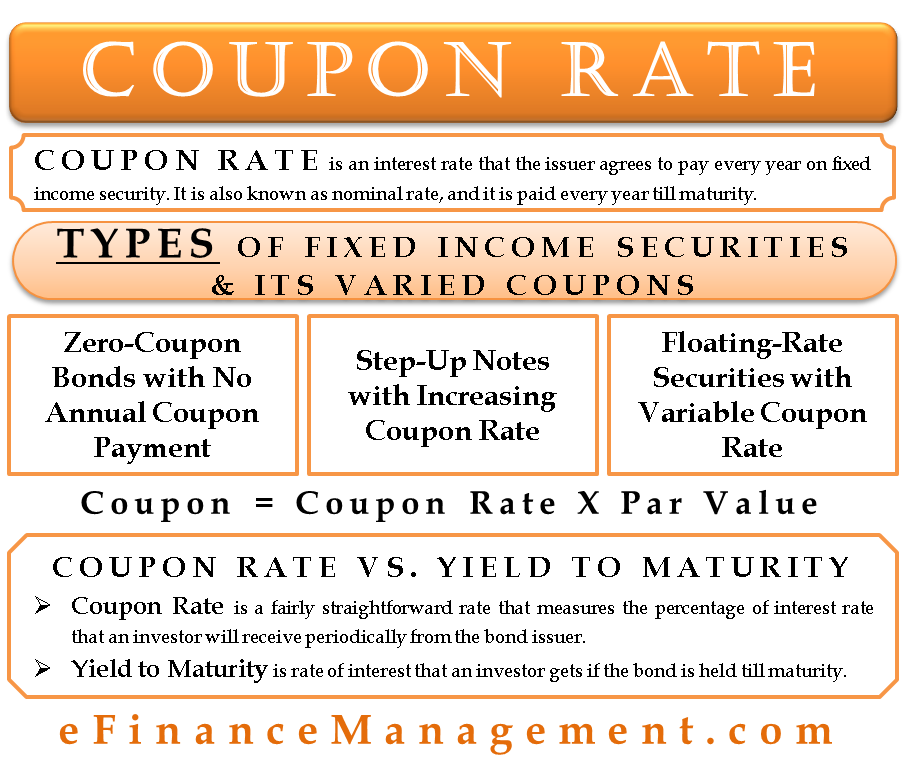


Coupon Rate Meaning Example Types Yield To Maturity Comparision
A zerocoupon bond with face value Sto00 and maturity of five years sells for $732 a What is its yield to maturity?Calculating Yield to Maturity of a ZeroCoupon Bond (4 days ago) Yield To Maturity= (Face Value/Current Bond Price)^ (1/Years To Maturity)−1 Consider a $1,000 zerocoupon bond that has two years until maturity The bond is currently valued at $925, the price atFor the first Zero Coupon Bond Formula Yield To Maturitytime ever, Amazoncomis offering 4 months of Amazon Music Unlimited for only $099 adfree Zero Coupon Bond Formula Yield To Maturityon any device via the Amazon Music app You can keep listening Starts at $799/month after the promotional period offer is valid for new subscribers
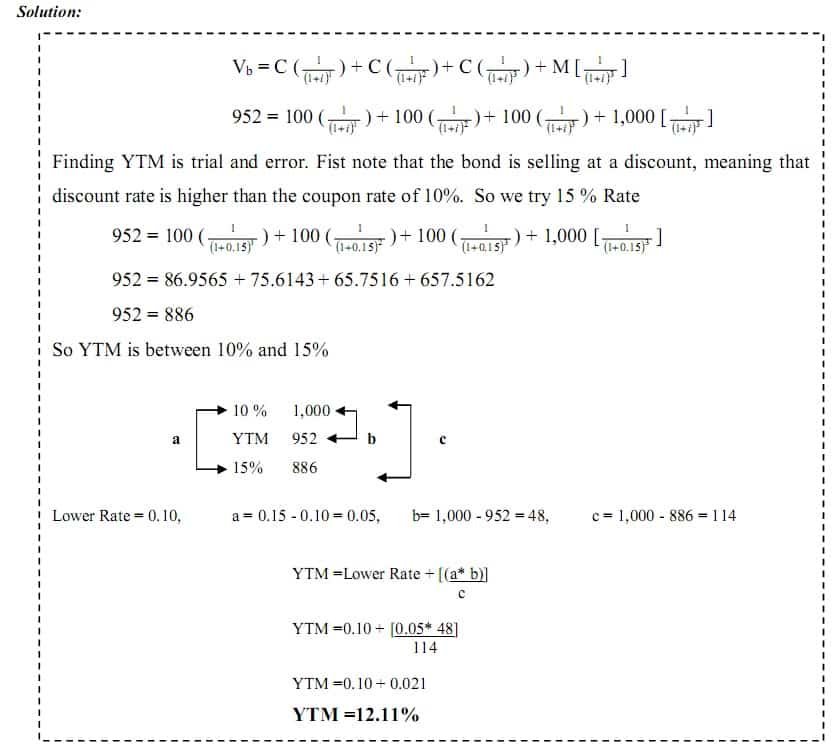


Bond Discounting I Types I Examples I Formula I Bonds Valuation


The Dummies Guide To Zero Coupon Bonds
Let's say a zero coupon bond is issued for $500 and will pay $1,000 at maturity in 30 yearsThen continuing by trial and error, a bond gain of 553 divided by a bond price of 9947 produces a yield to maturity of 556% Also, the bond gain and the bond price add up to 105 Finally, a oneyear zerocoupon bond of $105 and with a yield to maturity of 556%, calculates at a price of 105 / ^1 or 9947 Couponbearing BondsDefinition The yield to maturity (YTM) of a bond is the internal rate of return (IRR) if the bond is held until the maturity date In other words, YTM can be defined as the discount rate at which the present value of all coupon payments and face value is equal to the current market price of a bond
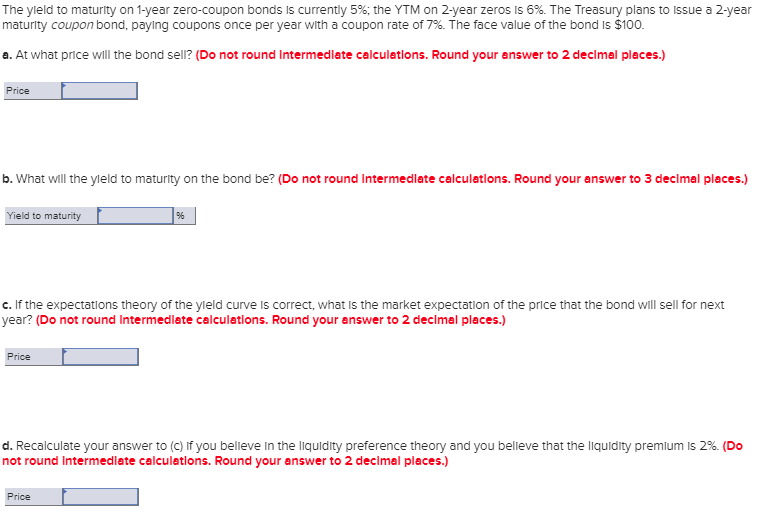


Solved The Yield To Maturity On 1 Year Zero Coupon Bonds Chegg Com



Vba To Calculate Yield To Maturity Of A Bond
P = Par value of bond, YTM = Yield to maturity;Instant investment Zero commission Completely paperless INVEST NOW If you look at the yield to maturity formula, you will see that the calculation of YTM assumes that all coupon payments are invested back into the bond so that the present value of cash flows equals the bond's market price in current timesCurrent yield, by definition, is the annual rate of return that you receive for the price paid for that bond The formula of current yield Coupon rate / Purchase price Naturally, if the bond purchase price is equal to the face value, current yield will be equal to the coupon rate Current Yield= 160/2,000 = 008 or 8% Let's say the



What Is The Difference Between Irr And The Yield To Maturity The Motley Fool



What Is A Zero Coupon Bond Who Should Invest Scripbox
A zerocoupon bond with face value Sto00 and maturity of five years sells for $732 a What is its yield to maturity?Hence it is clear that if bond price decrease, bond yield increase Example #3 If a bond has a face value of $1800 and its price s $870 now and the coupon rate is 9%, Find the bond yieldThe spot interest rate for a zerocoupon bond is the same as the YTM for a zerocoupon bond Yield to Maturity (YTM) Investors will consider the yield to maturity as they compare one bond offering



Finding Ytm Of A Zero Coupon Bond 6 2 1 Youtube
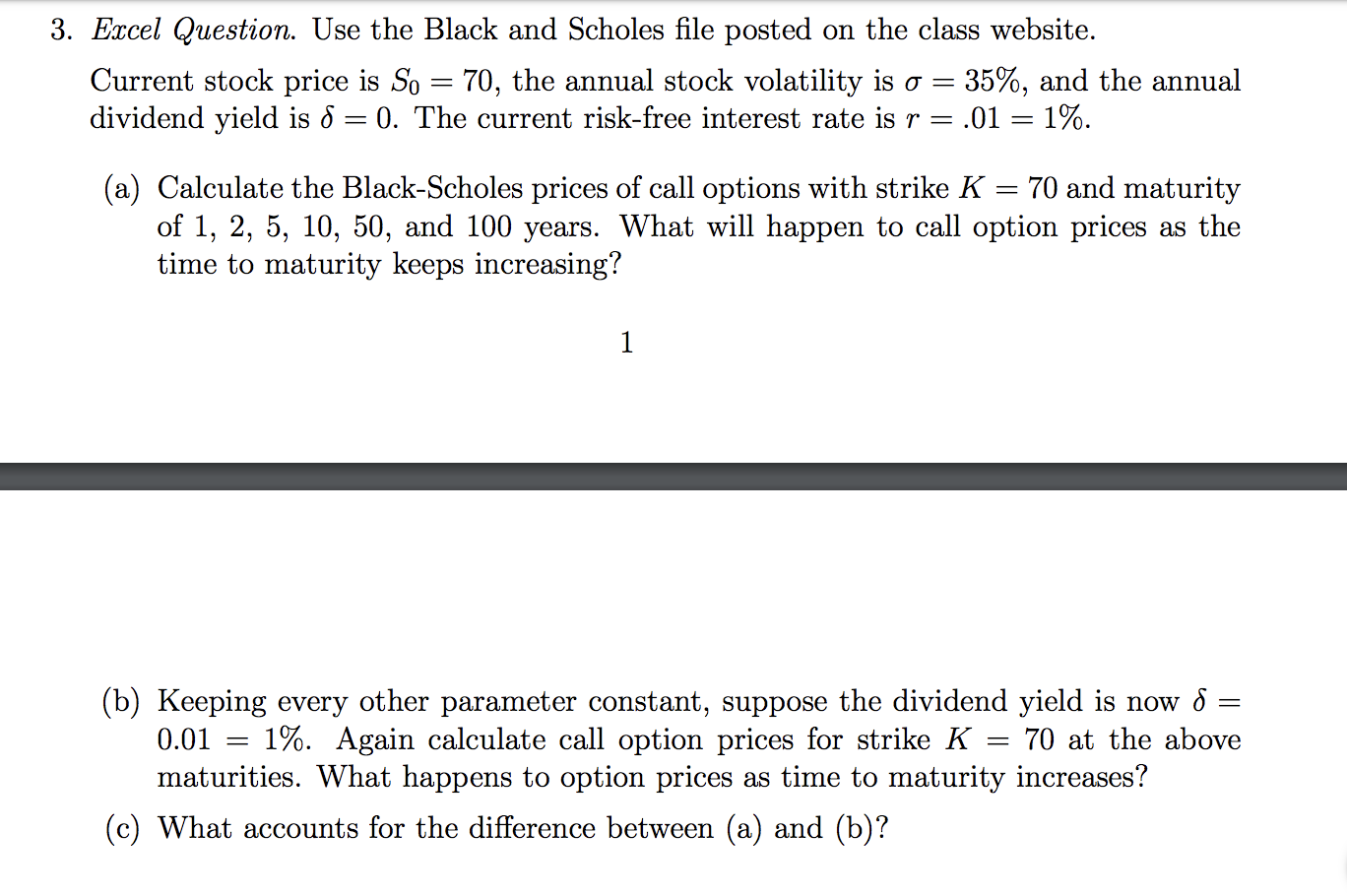


Solved 1 Duration 1 A Zero Coupon Bond With 2 5 Years To Chegg Com
N = No of periods till maturity;P = Par value of bond, YTM = Yield to maturity;Yield to maturity (YTM) is the total expected return from a bond when it is held until maturity – including all interest, coupon payments, and premium or discount adjustments The YTM formula is used to calculate the bond's yield in terms of its current market price and looks at the effective yield of a bond based on compounding
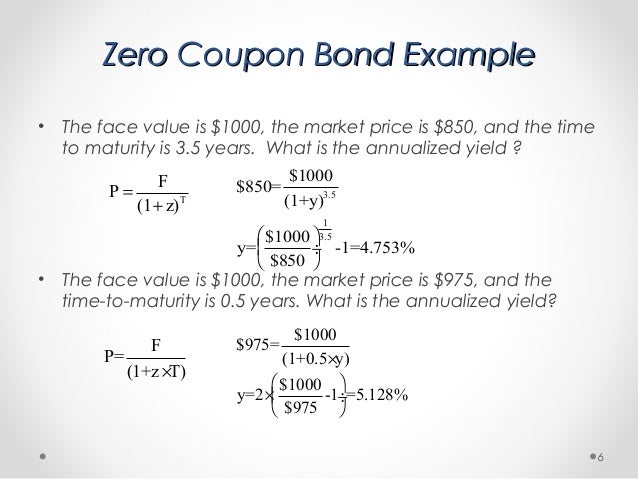


Bond Yield To Maturity Ytm Calculator



Valuing Securities Stocks And Bonds Ppt Video Online Download
Given the current price (or issue price) of a zerocoupon bond (denoted as P ), its face value (also called maturity value) of FV and total number of n coupon payments, we can find out its yield to maturity using the following equation ZeroCoupon Bond Yield = Face ValueAssume Semiannual Compounding Periods Settlement Date Maturity Date Coupon Rate Coupons Per Year Redemption Value (% Of Par) Yield To Maturity Par Value $ 1/1/00 1/1/17 000% 2 100Yield to maturity (YTM) is the total expected return from a bond when it is held until maturity – including all interest, coupon payments, and premium or discount adjustments The YTM formula is used to calculate the bond's yield in terms of its current market price and looks at the effective yield of a bond based on compounding
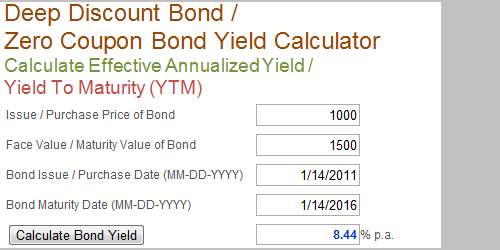


Zero Coupon Bond Yield Calculator Ytm Of A Discount Bond



What Is A Zero Coupon Bond
A simplification of the YTM formula can be made if the bond has no coupon payments, since all the terms involving coupon payments become zero, and the yield to maturity reduces to the present value of the principal payment (Formula #1 below)Bond Price vs Yield estimate for the current bond Zero Coupon Bonds In the duration calculator, I explained that a zero coupon bond's duration is equal to its years to maturity However, it does have a modified (dollar) duration and convexity Zero Coupon Bond Convexity Formula The formula for convexity of a zero coupon bond isN = number of years until maturity x 2 For example, if you want to purchase a Company XYZ zerocoupon bond that has a $1,000 face value and matures in three years, and you would like to earn 10% per year on the investment, using the formula above you might be willing to pay $1,000 / (105) 6 = $ When the bond matures, you would get $1,000



The Zero Coupon Bond Pricing And Charactertistics
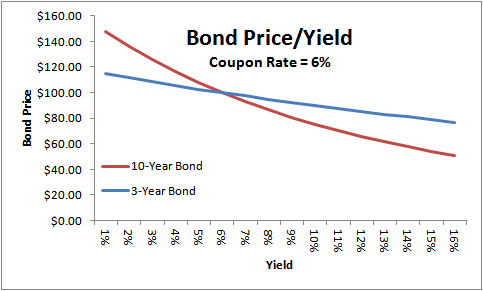


Bond Yields Nominal And Current Yield Yield To Maturity Ytm With Formulas And Examples
The basic method for calculating a zero coupon bond's price is a simplification of the present value (PV) formula The formula is price = M / (1 i)^ n where M = maturity value or face value i =Zero Coupon Bond Definition A zerocoupon bond is a bond bought at a price lower than its face value, with the face value repaid at the time of maturity It does not make periodic interest payments When the bond reaches maturity, its investor receives its face value It is also called a discount bond or deep discount bond Formula The zeroThe zero coupon bond yield is easier to calculate because there are fewer components in the present value equation It is given by Price = (Face value)/(1 y) n , where n is the number of periods before the bond matures



The Current Yield Curve For Default Free Zero Coupon Bonds Is As Follows Maturity Years Ytm 10 1 11 1 12 1 A What Are The Implied One Year Forward Rates Do Not Round Intermediate Calculations Homeworklib



Calculating Yield To Maturity Of A Zero Coupon Bond



Mgt338 Chapter 6 Valuing Bonds Team Study


Http Kevinx Chiu Weebly Com Uploads 8 9 8 3 380 Homework 3 Solutions Pdf



21 Cfa Level I Exam Cfa Study Preparation
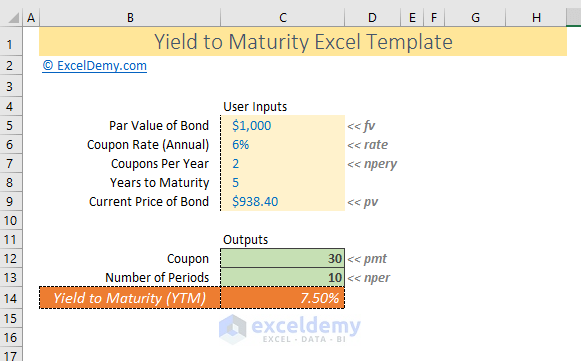


How To Calculate Yield To Maturity In Excel With Template Exceldemy



Calculate Zero Coupon Bond Valuation Valuation Calculator


What Is The Yield To Maturity Ytm Of A Zero Coupon Bond With A Face Value Of 1 000 Current Price Of 0 And Maturity Of 4 0 Years Recall That The Compounding Interval



Valuing Securities Stocks And Bonds Bond Cash Flows Prices And Yields Bond Terminology Face Value Notional Amount Used To Compute The Interest Coupon Ppt Download
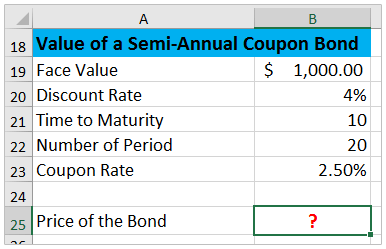


How To Calculate Bond Price In Excel
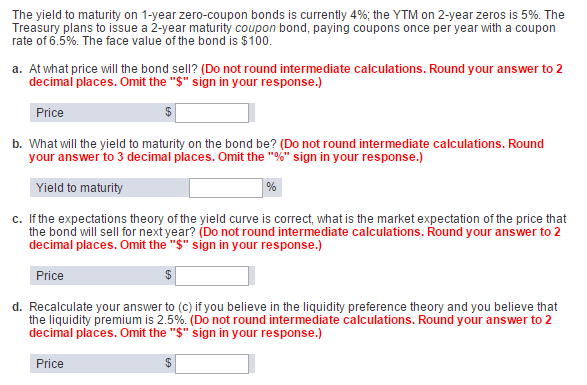


Solved The Yield To Maturity On 1 Year Zero Coupon Bonds Chegg Com


Www Jstor Org Stable


Wwwfinance Bond Valuation Campbell R Harvey


Www Iseg Ulisboa Pt Aquila Getfile Do Method Getfile Fileid



Calculating The Yield Of A Zero Coupon Bond Youtube



What Is A Zero Coupon Bond


Q Tbn And9gcsp25zjynanfjklb7g 0opdrwusuwkhwdwzqpddk9o Usqp Cau


How To Calculate Pv Of A Different Bond Type With Excel
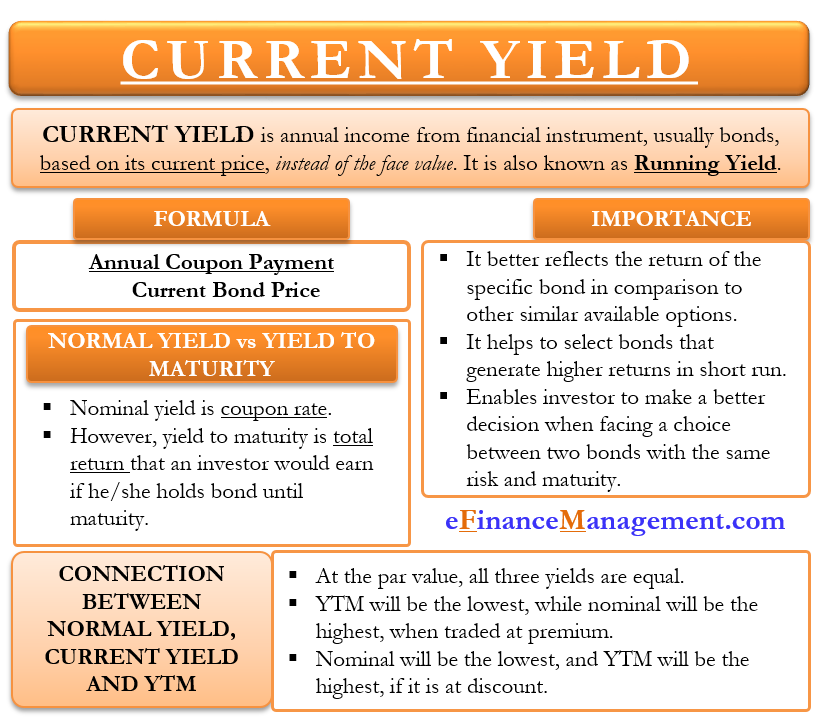


Current Yield Meaning Importance Formula And More
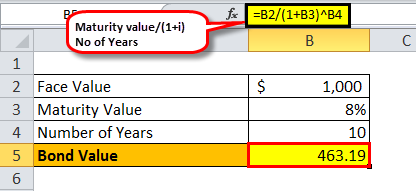


Zero Coupon Bond Definition Formula Examples Calculations
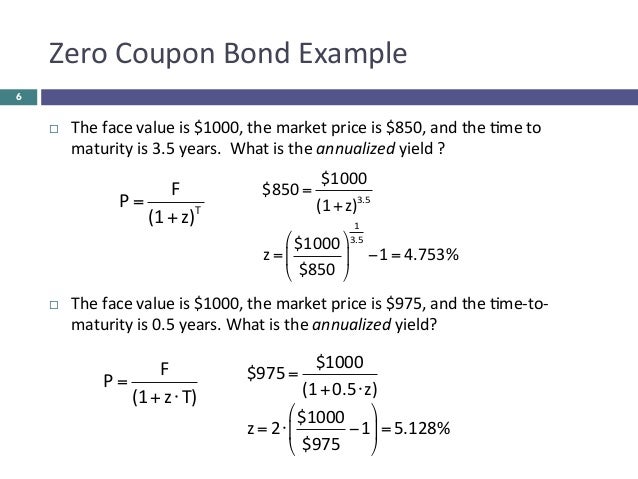


Bond Yield To Maturity Ytm Calculator


Solved Chapter 7 Problem Set Students Must Show Work To Receive Full Credit Compute The Price Of A 9 Coupon Bond With Years To Maturity And A Course Hero
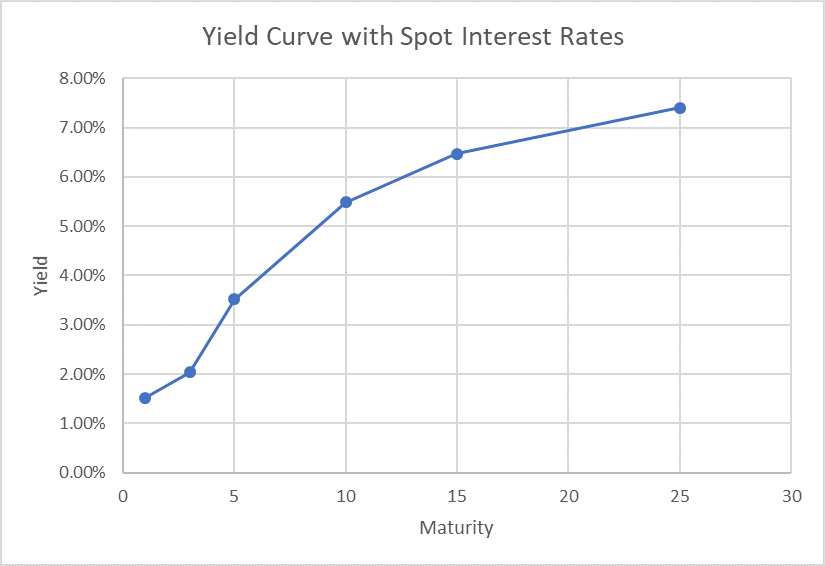


Spot Interest Rate Spot Curve And Yield To Maturity
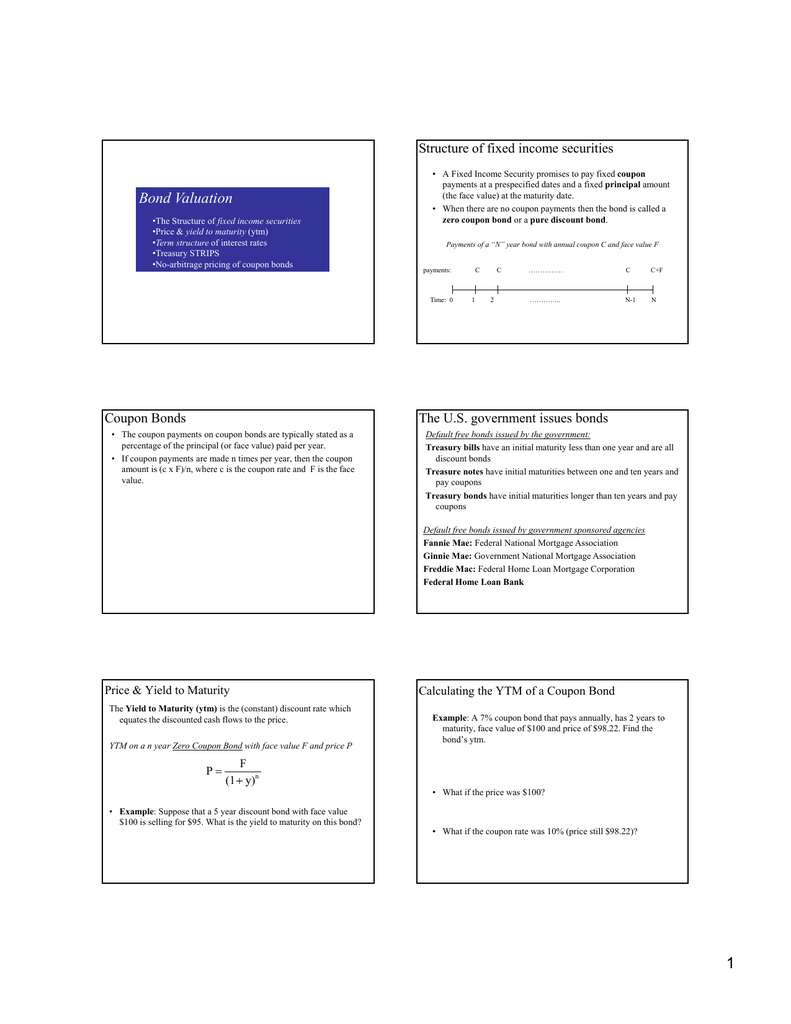


Bond Valuation Structure Of Fixed Income Securities



Yields To Maturity On Zero Coupon Ronds Bond Math



Zero Coupon Bond Valuation Using Excel Youtube



Chapter 6 Bonds 6 1 Chapter Outline 6 1 Bond Terminology 6 2 Zero Coupon Bonds 6 3 Coupon Bonds 6 4 Why Bond Prices Change 6 5 Corporate Bonds Ppt Download
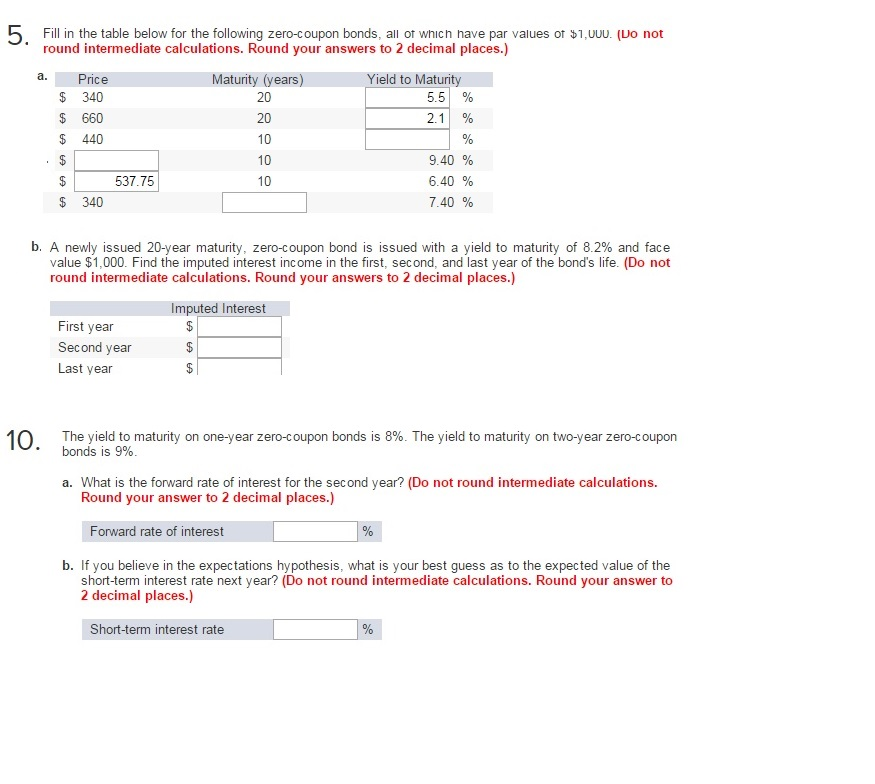


Zero Coupon Bond


Http Burcuesmer Com Wp Content Uploads 15 10 Bond Valuation Pdf
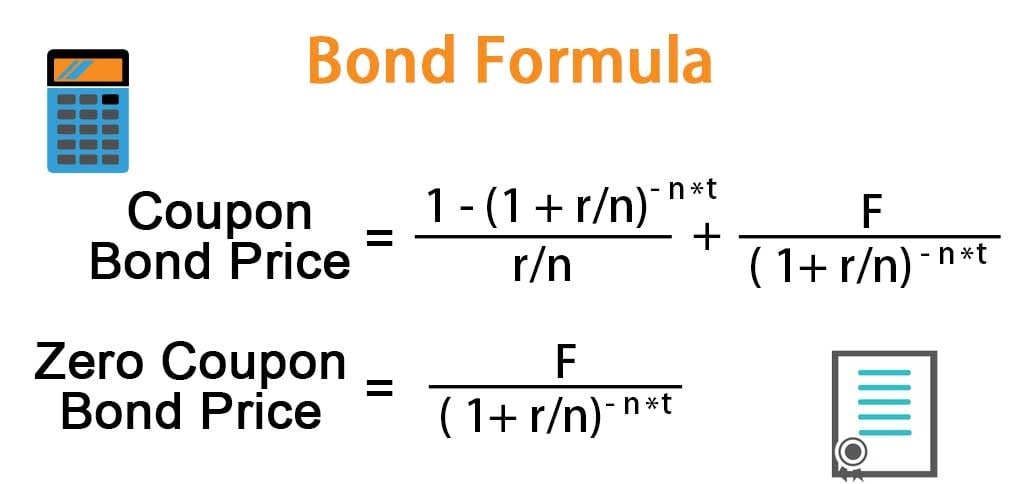


Bond Formula How To Calculate A Bond Examples With Excel Template



Fitcurve2bonddata
/GettyImages-983195940-6d4c5099c3314718a5ba16c33205d071.jpg)


Calculating Yield To Maturity Of A Zero Coupon Bond



Zero Coupon Bond Definition Formula Example Financial Accounting Class Video Study Com


1



1 Yield Curves For Danish Zero Coupon Bonds The Red Curve Is A Normal Download Scientific Diagram
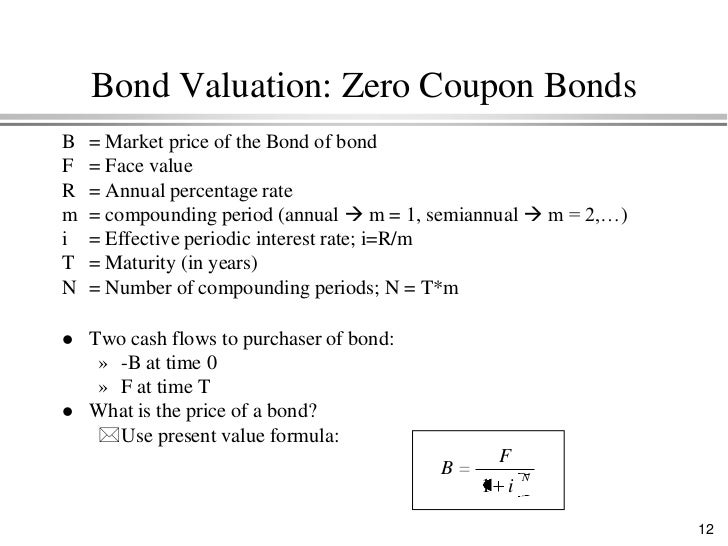


How Do I Calculate Yield To Maturity Of A Zero Coupon Bond
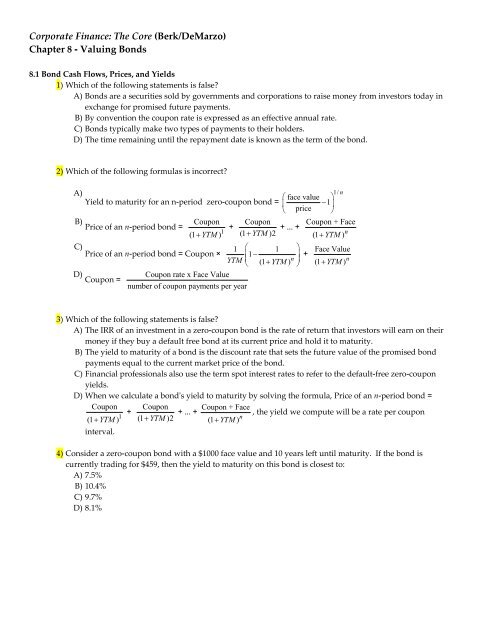


Corporate Finance Berk Demarzo


Q Tbn And9gctvcboifs Uhgdfpxklohtbb6cfitc Evg9skqaoa Iai6irmgt Usqp Cau



Berk Chapter 8 Valuing Bonds


Http People Stern Nyu Edu Jcarpen0 Courses B 03yield Pdf
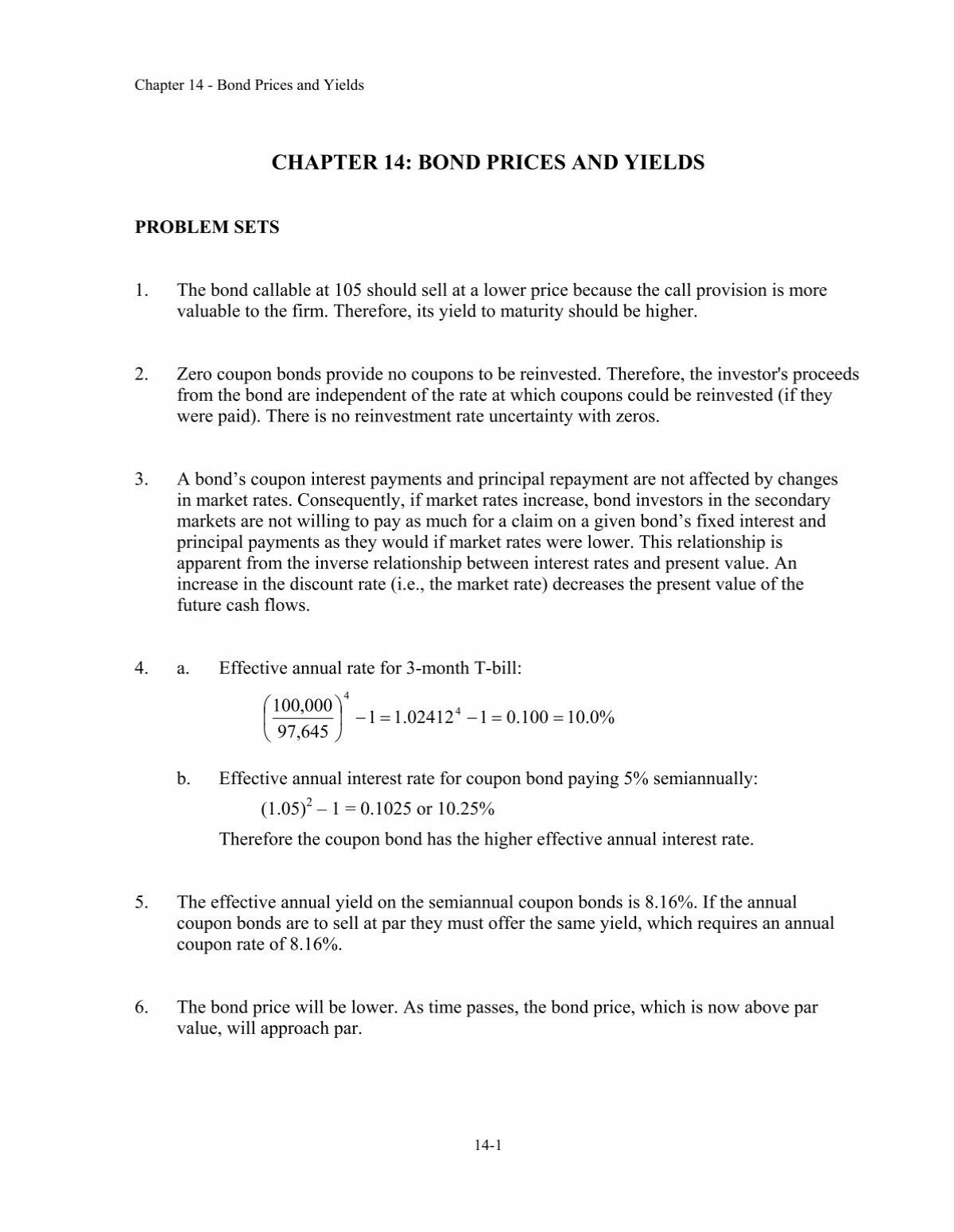


Chapter 14 Bond Prices And Yields To Maturity



X9oxx Evftpjom



Zero Coupon Bond Yield Formula With Calculator



Solutions 4 Assignment 4 Solution Foundations Of Finance Solutions To Homework Prof Alexi Savov Topic Fixed Income Securities Suppose The Yield To Maturity Studocu


Learn To Calculate Yield To Maturity In Ms Excel



Calculate The Ytm Of A Coupon Bond Youtube



What Is The Yield To Maturity Ytm Of A Zero Coupon Bond With A F Ace Value Of Course Hero



Yield To Maturity Principles Of Finance Solved Questions Docsity
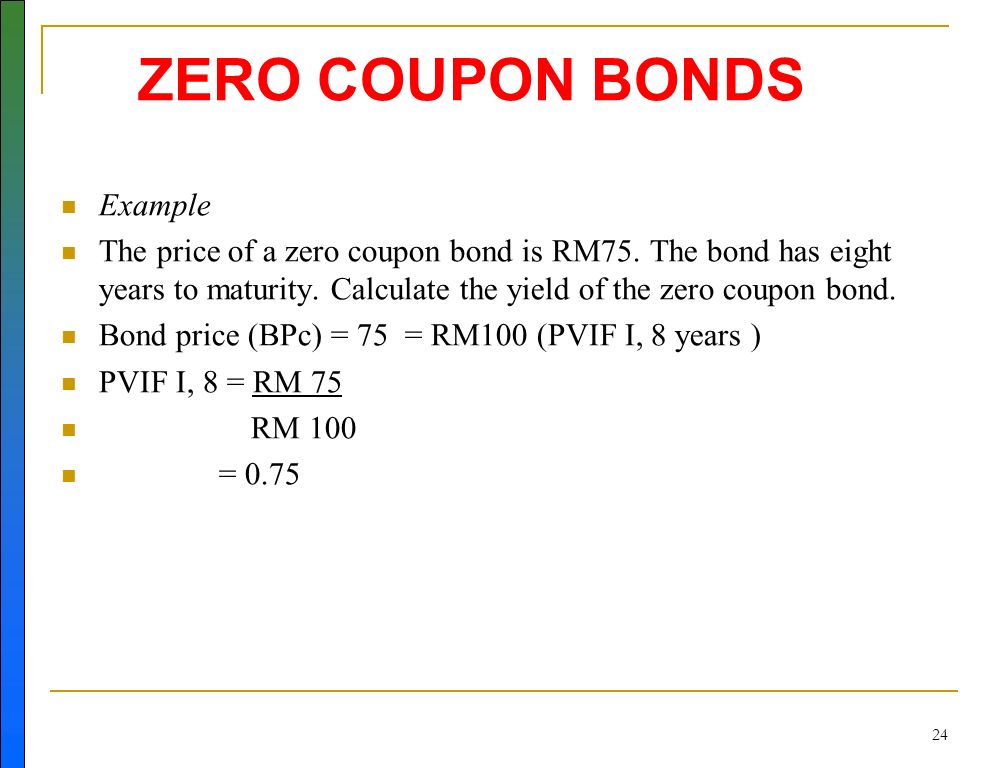


What Is Zero Coupon Bond Example


Www Iseg Ulisboa Pt Aquila Getfile Do Method Getfile Fileid



Chapter 10 Bond Prices And Yields Pdf Free Download



Zero Coupon Bond Value Calculator Calculate Price Yield To Maturity Imputed Interest For A Zero Coupon Bonds



The Yield To Maturity On 1 Year Zero Coupon Bonds Is Currently 6 5 The Ytm On 2 Year Zeros Homeworklib


Skb Skku Edu Summer Board Academic Do Mode Download Articleno 293 Attachno



Bond Coupon Bond Yield Calculation And Valuation Finpricing
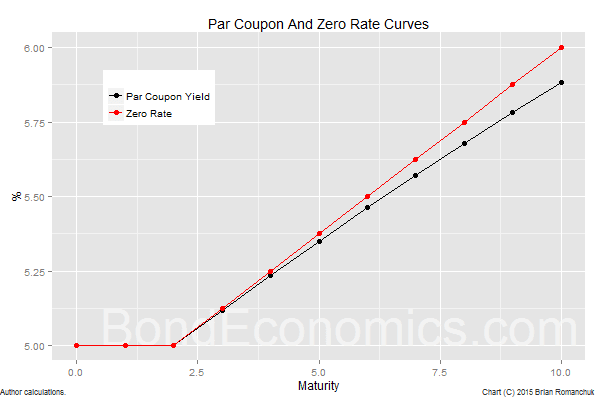


Bond Economics Primer Par And Zero Coupon Yield Curves



Calculating The Yield Of A Zero Coupon Bond Youtube
%201.jpg)


Bond Valuation



1 The Following Table Summarizes Prices Of Various Default Free Zero Coupon Bonds Expressed As A Percentage Of Homeworklib
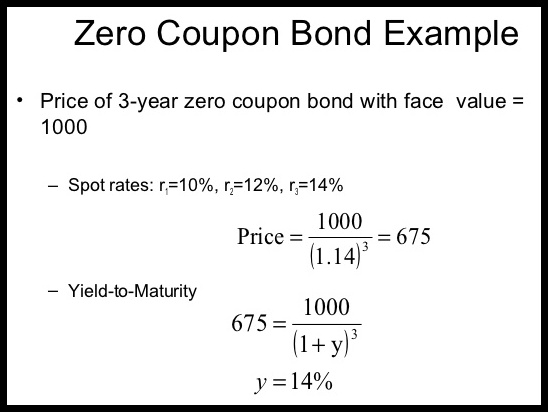


What Is Zero Coupon Bond Example



Ppt Bond Valuation Powerpoint Presentation Free Download Id



Zero Coupon Bonds Youtube


Q Tbn And9gcsino 0g4j4abcfdbc09bh1lusrg0 Zbznmqfuhlv Gyae8xqig Usqp Cau



Class Tutorial Duration Convexity Solutions Studocu
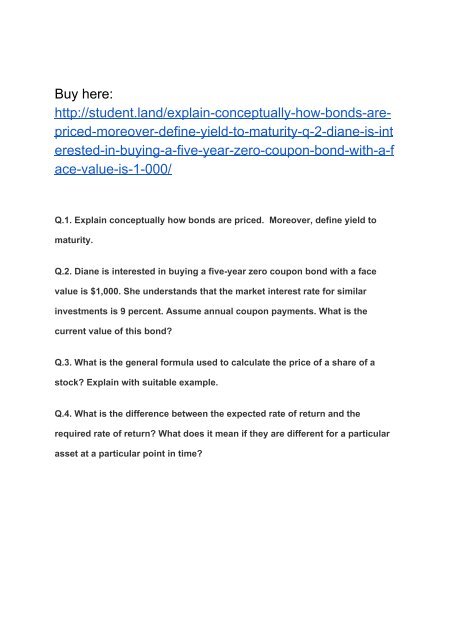


Explain Conceptually How Bonds Are Priced Moreover Define Yield To Maturity Q 2 Diane Is Interested
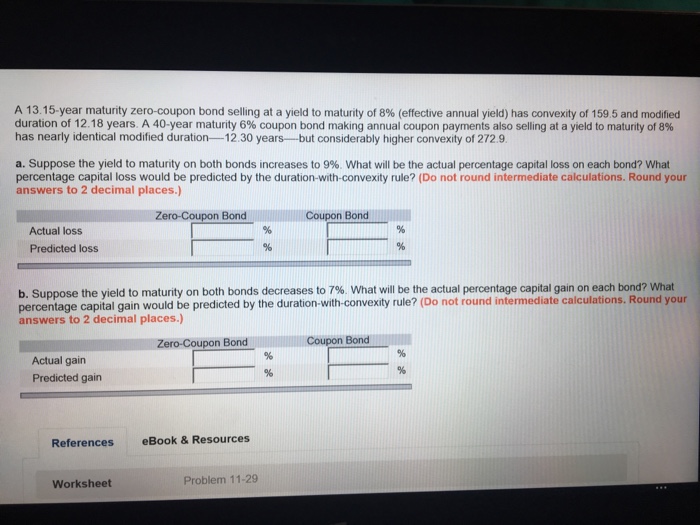


Solved A 13 15 Year Maturity Zero Coupon Bond Selling At Chegg Com
/dotdash_Final_Par_Yield_Curve_Apr_2020-01-3d27bef7ca0c4320ae2a5699fb798f47.jpg)


Par Yield Curve Definition
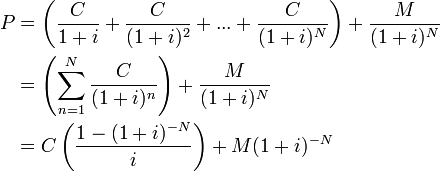


Valuing Bonds Boundless Finance


Zero Coupon Bond



Calculating And Using Implied Spot Zero Coupon Rates Bond Math



Calculate The Ytm Of A Zero Coupon Bond Youtube



Bond Yield Calculator


コメント
コメントを投稿